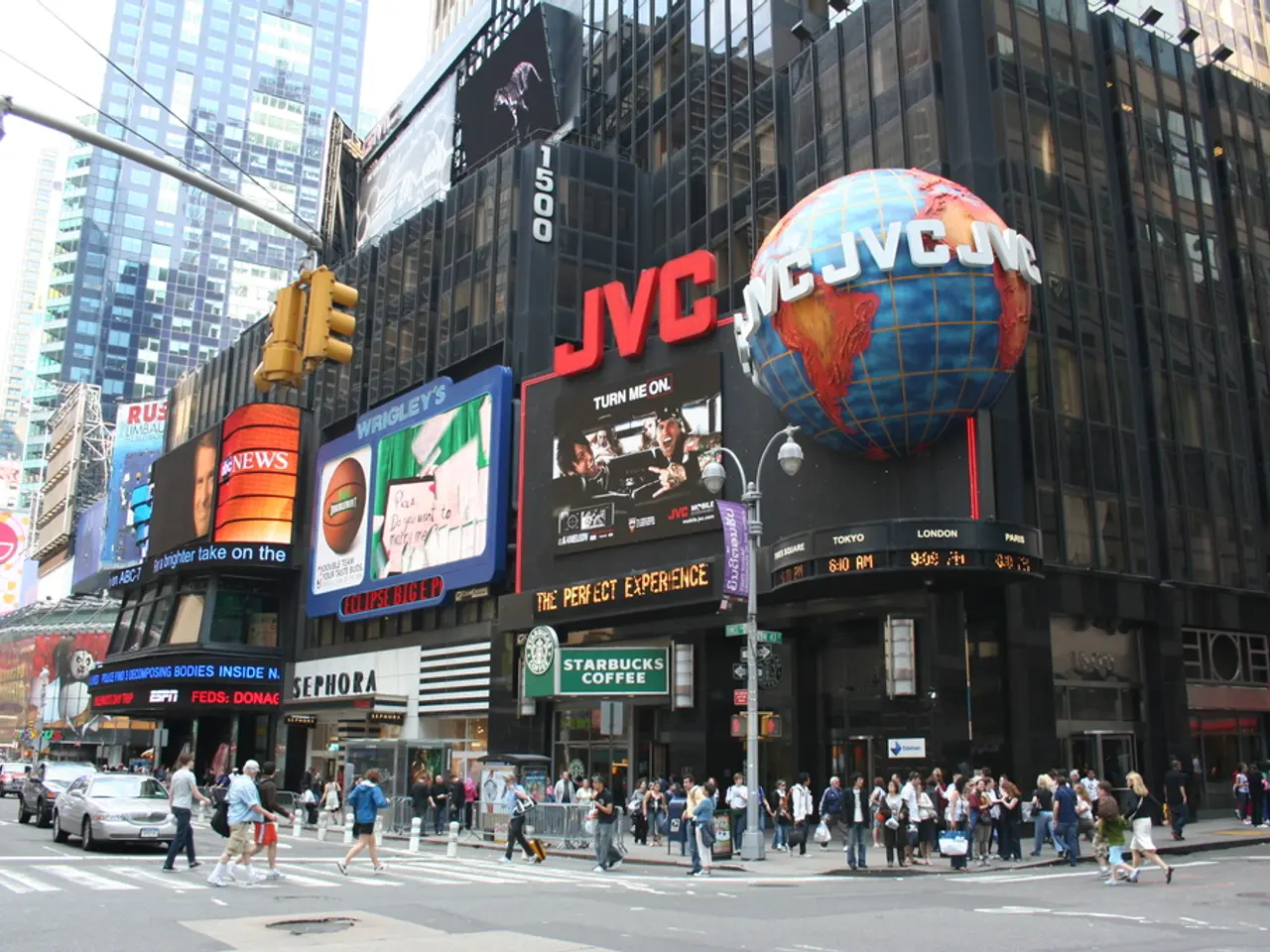Eased Pressure on Pedestrian Traffic Signals
In recent developments, German cities are introducing new traffic light systems aimed at improving safety and optimizing traffic flow for vulnerable road users, such as pedestrians and cyclists.
The first AI traffic light in Germany was installed in Hamm in spring 2023. This innovative technology is designed to detect cyclists and pedestrians early and show them a green light more quickly. Similar systems are being tested in Cologne and Wuppertal.
Traffic experts, however, warn that changes in this area could take years. This is due to the significant impacts that alterations in traffic light settings can have on the entire traffic management system of a municipality.
One of the key initiatives is the "all-green concept," which allows pedestrians to receive green signals simultaneously from all directions and enables diagonal crossing. This concept is known as "Alles Fietsers Tegelijkertijd Groen" in the Netherlands and is also used in Canada and Japan.
Karl-Josef Büscher, chairman of the NRW State Senior Citizens' Council, is advocating for longer green phases for pedestrians, particularly for seniors and people with disabilities who may need more time to cross the street safely. He suggests that a longer green phase for pedestrians would not cause significant delays for drivers.
Ferry Weber, SPD politician and spokesman for the Düsseldorf pedestrian initiative, also supports the idea of a longer green phase for pedestrians, but suggests that car drivers could also receive a longer green.
Digital systems like VeloFlow in Berlin are providing cyclists with advance information about approaching traffic light phases to smooth traffic flows and reduce abrupt stops or red light violations. These systems use real-time traffic signal data to forecast green light availability about 200 meters ahead, encouraging steadier speeds rather than sudden braking.
Vision Zero-inspired traffic safety strategies are also being implemented in Berlin and other German cities. These strategies aim to raise pedestrian safety by increasing and improving designated crossing points and pedestrian traffic lights, especially in high-demand areas to reduce collision points with motor vehicles.
Enhanced traffic enforcement measures and smart infrastructure, including pedestrian crosswalk technologies, are also being used to provide safer conditions that can promote smoother pedestrian flows at crossings. However, specific mention of adjusting green light timing for pedestrians is limited.
It is worth noting that there is a "protection time" after the pedestrian light turns red, during which both car and pedestrian lights are red, to allow pedestrians to cross the street. This is a crucial safety measure that ensures pedestrians have time to complete their crossing before cars resume movement.
In conclusion, Germany’s approach blends digital forecasting systems and safety-oriented infrastructure improvements that indirectly facilitate pedestrian traffic. Ongoing research and applications may move toward more adaptive pedestrian green phase management in the near future, potentially leading to direct extensions of green pedestrian phases. More detailed municipal traffic management plans or pilot projects focusing on adaptive traffic light control may provide additional insights into this evolving field.
Read also:
- Trump's SNAP reductions and New York City Council's grocery delivery legislation: Problems for city residents highlighted
- Forty-year-old diet: A list of meal choices to savor
- Exiled Life's Conundrum: A Blend of Liberation, Disillusionment, and Distress
- Establishing a support network for family caregivers nationwide in the United States





